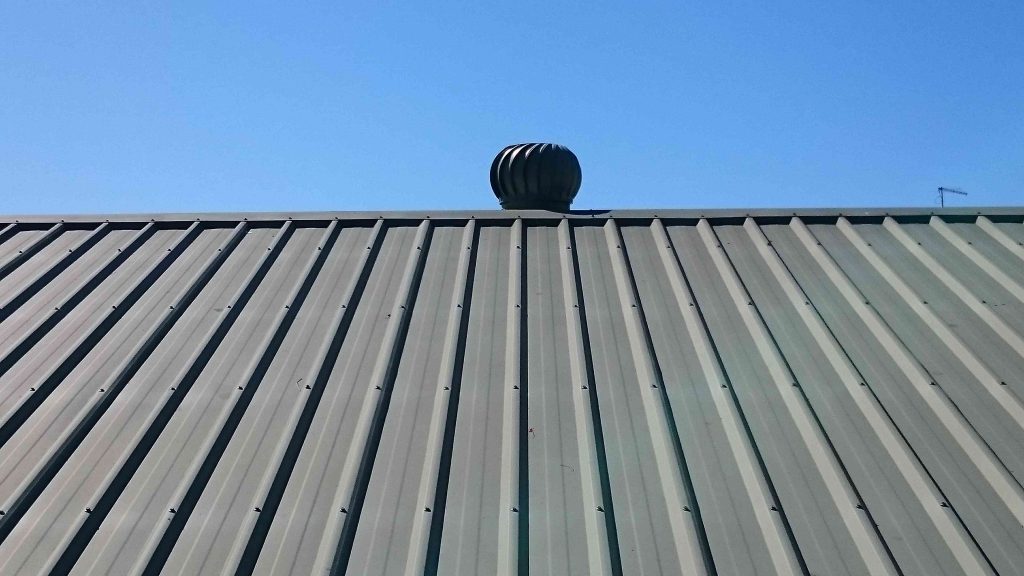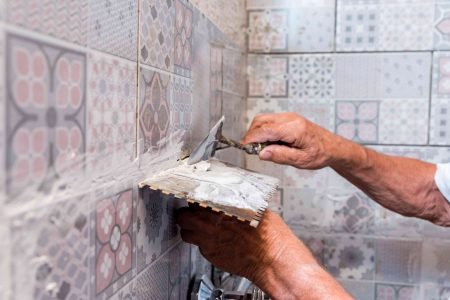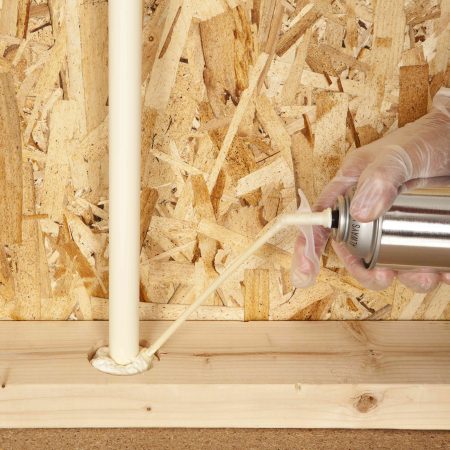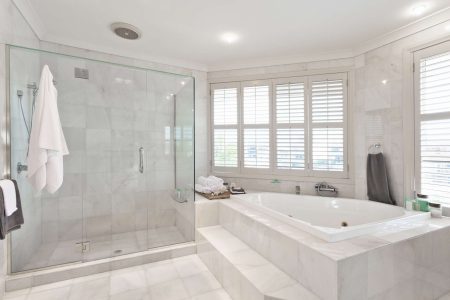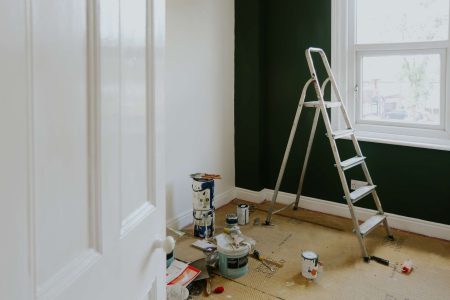Keeping a house cool and well-ventilated is important for its residents’ comfort and the house’s health. Attics must stay dry and climate-conditioned to prevent mold and ice dams from developing on the roof. Overly heated attics can also ruin shingles. Read on to find out if an attic fan is the best solution for you and look at its pros and cons compared to a whole house fan.
Is an Attic Fan Worth It?
You don’t need to choose between a whole-house or attic fan; they are not mutually exclusive. You can install a whole-house fan to draw air through the house and an attic fan to remove that air from the attic.
The attic fan is a better choice to ventilate the attic since it actively moves air out of the attic. Meanwhile, the whole-house fan only deposits air from the house into the attic. The whole-house fan relies on passive methods to remove that air from the attic unless an active attic fan is installed.
An attic fan actively improves attic ventilation, which saves money on energy bills in the summer and helps preserve the roof’s integrity; it appears to be a wise choice for those with attic ventilation issues. Take a closer look at its operation, installation, cost, appearance, and other factors to determine if it’s the solution you need.
Attic Fan vs. Whole-House Fan: Major Differences
While a whole-house fan and an attic fan perform similar functions—ventilating and cooling down a house—a significant difference is the areas they address. A whole-house fan draws air from the entire home and deposits it in the attic. An attic fan draws out air from the attic and sends it outside.
Attic Fan
An attic fan is an electrically powered exhaust fan on either the roof or the gable. Sometimes called a power attic ventilator, or PAV, the fan expels hot air from the attic when triggered by a thermostat located within the attic. To cycle the air through properly, there must also be an air intake, usually located in the soffit, under the eave, or in fascia areas of the roof. The fan draws out air from the attic, with fresh air from the intake replenishing the attic air.
- Gable Attic Fan: Entirely located in the attic, a gable fan mounts vertically on the home’s existing gable. When signaled by the thermostat, it turns on and pushes built-up attic air out of the gable.
- Roof Attic Fan: A roof attic fan is located partially inside the attic and outside of it. The roof attic fan is positioned as high as possible on the roof but no closer than 24 inches to the roof’s ridgeline.
- Solar Powered Fan: Solar panels power these attic fans, not drawing extra energy consumption from the home. It’s mounted on the outside of the roof, circulating the warm air out vents on the eaves or roof. The downside is when the photovoltaic cell is charging; the unit is not running.
Whole-House Fan
A whole-house fan is an electrically powered fan that pulls fresh air through the home’s windows and sends it into the attic. One centrally-located fan in the ceiling of the topmost floor can change out the air in the house three to six times per hour, depending on the size of the house and the fan’s capacity. The ceiling vent’s louvers open and close in response to the fan’s operation.
Because more air is being delivered to the attic, installing a whole-house fan usually necessitates creating two to four times the area of attic vents than is typically needed. A good rule of thumb is to provide one square foot of opening for every 750 CFM (cubic feet per minute) of whole-house fan capacity.
| Whole-House Fan | Attic Fan | |
| What It Does | Pulls air in the house upward into the attic | Expels air from the attic to the outside |
| How It Cools | Removes built-up hot air and provides a gentle breeze | Cools down space above ceiling; less radiant heat can mean a cooler living area if ceiling is uninsulated |
| How to Use | Manual, controlled by switch or pull cord | Automatic, controlled by thermostat |
| Cost, Materials Only | $200 to $1,600 | $75 to $400 |
Cooling and Venting Ability
Attic Fan
Effective attic insulation reduces the need for an attic fan to cool the house. The insulation is designed to buffer a cool living space against searing hot attic temperatures or a warm living space against a cold attic. So, if your home’s attic is well insulated, you may not feel much difference by having an attic fan.
An attic fan can help cool down the living space if the attic is not insulated. A hot attic radiates heat through the ceiling, much like the heat of a coffee mug on a hand holding it. An attic fan lowers the heat in the house by reducing the attic’s temperature; it never moves any air within the home.
Attic fans can keep an attic well-ventilated, preventing the growth of mold and mildew.
Whole-House Fan
As long as the outdoor temperature is lower than the indoor temperature, a whole-house fan will help to cool down the home. Whole-house fans can be used to offset the usage of energy-hungry central air conditioning units. Researchers at Iowa State University estimated that a whole-house fan uses about 33% as much power as a central air conditioner. That’s based on a 2-1/2 ton air conditioner and a $0.06 kWh cost.
Best for Cooling and Venting Ability: Tied
A whole-house fan generally will cool the home better because it moves the air within the house. A whole-house fan is not as pronounced as a room fan but can be felt. It disperses hot air that has collected in the upper regions of your home and creates gentle air movement.
Installation
Attic Fan
Attic fans that mount behind existing gable vents can be installed quickly if the attic has an existing power source. Powered roof vents are more challenging to install. These vents require a hole in the roof, plus the exterior side of the fan integrated into the shingles.
Whole-House Fan
As long as the attic has electric power, the most challenging part of installing a whole-house fan is cutting into the ceiling drywall and attaching the damper box to the ceiling joists. Larger whole-house fans that span two joists are more difficult to install because the severed joist must be braced by two side pieces. Venting into the attic is simple: the air is pushed into the attic and the fan is suspended with two hanger straps from the rafters.
Best for Installation: Attic Fan
An attic fan will usually be easier to install than a whole-house fan because installing a whole-house fan means enlarging or increasing the attic’s outflow to the exterior.
Appearance
Attic Fan
The most visually obtrusive attic fan installation will be one where several fans are located on a roof. A gable-mounted attic fan is not as noticeable as it will fit within the attic and behind the gable opening’s vent.
Whole-House Fan
A whole-house fan is located within the attic but must open into the home’s ceiling, with a vent covering the opening. Whole-house fans are the width of your ceiling’s joists and are around 36- to 40-inches long.
Best For Appearance: Attic Fan
An attic fan will always be less visually intrusive than a whole-house fan because it has no opening to the living space. If the attic fan is located behind the home’s existing gable vent (rather than a shutter-style fan that replaces the vent), the fan will be nearly invisible from the outside.
Sound
Attic Fan
Because the attic fan is located either in a gable or on the roof, it is separated from the living area by several feet and by the ceiling. Additionally, the ceiling may be insulated, which provides significant soundproofing.
Whole-House Fan
The whole-house fan is located in the ceiling of the living space. Some whole-house fans have an insulated isolator: a metal bay that fits under the damper box to raise it a foot or two above the ceiling.
Best for Sound: Attic Fan
Individually, an attic and a whole-house fan have about the same sound level. But when installed, there is a greater separation between the attic fan and the living space, plus attic insulation may act as soundproofing. This means an installed attic fan will be quieter than a whole-house fan.
Ease of Operation
Attic Fan
Attic fans turn on and off automatically. A thermostat in the attic, often with a wide temperature range (from 60 to 120 degrees F, for instance), sends a signal to the fan to turn on when the preset temperature is reached.
Whole-House Fan
A whole-house fan is turned on and off by the user. Windows and screened doors must first be opened; then, the fan is turned on. The fan may have a pull cord that drops from the ceiling or is operated with a wall switch. Often a timer is put in place of a regular switch to allow for a set run time which is especially handy for nighttime.
Best for Ease of Operation: Attic Fan
An attic fan operates seamlessly and in the background. It doesn’t need to be adjusted unless the user wants to change the temperature setting. Windows and doors do not need to be opened or closed.
Cost of Product and Installation
Both attic fans and whole-house fans require an electrician to route an electric cable into the attic and hardwire the power to the unit.
Attic Fan
Both gable-mount and roof-mount attic fans cost from $75 to $225. Shutter-style attic fans that replace existing gable vents cost $200 to $400.
Whole-House Fan
Most whole-house fans are rated between 1,500 and 7,000 CFM. Lower-velocity whole-house fans that blow directly into the attic and have no attached vents cost $200 to $400. Higher velocity fans with connecting vents cost from $800 to $1,600.
Best for Product Cost and Installation: Attic Fan
Attic fans are less expensive to purchase and install than whole-house fans.
Top Brands
Below are some of the most popular and well-respected brands to look out for.
- Active Ventilation
- Air Vent
- iLiving
- LOMANCO
- Masterflow
- Ventamatic
Read the full article here







